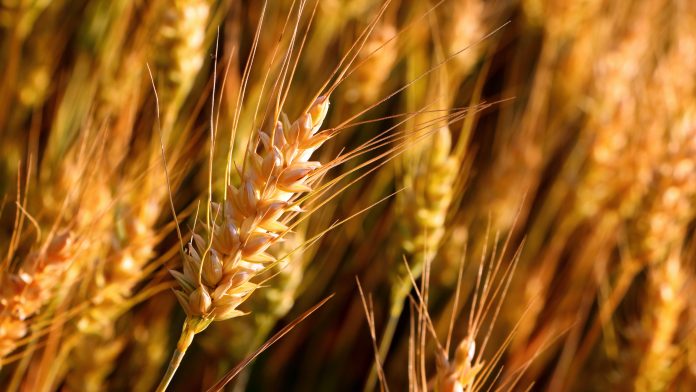Aarthi Janakiraman, Industry Manager, Chemicals and Advanced Materials at TechVision, Frost & Sullivan, provides an in-depth focus on wheat cultivation across the globe, within the wider field of agriculture and crops
Wheat is one of the first domestic crops and has been one of the staples in the diet of many civilisations for more than 8,000 years. At present, it is cultivated in more land area than all major commercial crops such as rice, maize, potatoes and so on. It is grown on around 220 million ha, with a higher cultivation area than any other crop and its world trade is greater than all the crops combined.
While most of the wheat is consumed in the country, it is cultivated, around one-fifth of the crop is intended annually for export markets; its world trade is greater than for all other crops combined. While developing countries such as China and India are amongst the largest cultivators and exporter of wheat, its importance in Europe and North America as a cultivated crop in terms of the land area can’t be denied. France, Germany, Russia, UK, U.S. and Canada feature prominently as key countries in wheat cultivation.
The role of wheat, in its myriad forms as a staple in our day-to-day diet, can’t be denied. It is considered as a dominant staple in most of the African and West and Central Asian countries. It supplants maize or rice as a source of protein and is a popular source of carbohydrates, next only to rice. The presence of gluten in wheat, results in the wheat flour, possessing a unique combination of viscoelastic properties; this makes it a popular ingredient choice in various cuisines. With a judicious content of minerals, vitamins and lipids, it’s considered highly nutritious, especially when consumed along with legume/animal protein. It also finds use as animal feed and in other applications, such as a probable feedstock for biofuel production and the manufacture of chemical intermediates. Its use as food, feed, seed, both in unprocessed and processed forms is unparalleled.
In short, the adaptability of the crop for cultivation in various climatic regions, the ease of storage compared to most of the other commercial crops and the ability to easily convert the grain to flour for making various interesting foods, makes wheat the most popular crops cultivated across the globe and an essential route to ensure food safety and security.
Improving productivity and yield: A key focus across countries
Various researches predict that the requirement of wheat is expected to increase by at least 50% to 60% by the year 2050. Area expansion is likely to be a challenge and therefore, many countries have already started working towards increasing crop yield and production. China has drastically increased productivity per hectare, making it one of the leading countries in terms of productivity per hectare. Countries such as the U.S. and India already have launched initiatives aiming to double its productivity by the year 2030.
Alternatively, countries are also studying the viability of planting the crop in non-traditional areas such as in acid or saline soils. Strains with greater heat tolerance, the increased survival rate in extreme conditions are developed by breeders to ensure productivity. Despite all efforts, there still exists a gap between the actual yield in cultivated area and the yield obtained in test farms. This showcases that yield and productivity is interdependent on various biotic and abiotic factors including socio-economical, biological, technological and ecological ones.
While countries are drawing long-term plans to improve productivity, cultivators at the ground level, still need to overcome challenges that can ensure viable crop yield and guarantee profits.
Current research initiatives: Can they overcome challenges?
Current research studies are mostly focused on developing the disease- and drought-resistant strains, inter-specific and inter-generic hybridisation, using biotechnology techniques to improve productivity and studying plant physiology to understand the interactions between the pest-host plant cells. While success has been obtained in developing hybrid varieties of crop and disease-resistant ones, farmers still face challenges from pests, weeds and microbial attack.
The impact of climate change has resulted in an increased occurrence of changes in humidity, temperature and wind direction. This can cause “lodging” in wheat crops, reducing the yield. Fusarium head blight (FHB), or scab, is a fungal disease that can attack all types of wheat strains, leading to yield losses and quality reduction. Rust diseases such as the Ug99 wheat stem rust can destroy the whole plant and cause massive losses. Additionally, leaf rust and stripe rust can also cause significant losses. Rust pathogens can become resistant rapidly, making them difficult to manage and treat. Apart from these, insects such as Russian wheat aphid, Hessian fly and wheat stem sawfly are quickly becoming virulent in nature and should be overcome. Weeds like Kochia also make life difficult for farmers.
The way forward: Focus on integrated approaches and genomic research
With the current EU regulatory scenario, farmers are running out of options of approved substances that can be used for pest management and control. Added pressure due to climate change makes it important to find effective alternatives rapidly. Developing more virus-resistant lines of wheat is the need of the hour. Continuing research efforts from the United States Department of Agriculture (USDA), European Union (EU)-funded collaborative research projects are focused on the same. The sequencing of the wheat genome is expected to increase the ease of developing hybrid strains that can survive in extreme conditions and also resistant to pests. While the use of hybrid strains can provide yield stability, its ability to enhance productivity remains to be seen and tested.
In the meantime, farmers would need to continue relying on integrated pest management approaches, use of precision farming techniques and time-and – tested methods, such as crop rotation to ensure the desired yield and prevent crop losses.
The use of biometric and spatial analysis combined with molecular markers, gene stacking techniques, etc. can help in the development of hybrid strains with desired characteristics. More research is needed to understand the influence of genetic factors to yield and quality in response to both biotic and abiotic factors. Involvement from the entire value chain and collaborative approaches are needed not only to ensure successful research initiatives but also establish successful crop management programs that are of help to cultivators.
Acknowledgement
I thank the TechVision Group at Frost & Sullivan who helped in providing insights for this article.
References
Decline in climate resilience of European wheat, Helena Kahiluoto, Janne Kaseva, Jan Balek, Jørgen E. Olesen, Margarita Ruiz-Ramos, Anne Gobin, Kurt Christian Kersebaum, Jozef Takáč, Francoise Ruget, Roberto Ferrise, Pavol Bezak, Gemma Capellades, Camilla Dibari, Hanna Mäki- nen, Claas Nendel, Domenico Ventrella, Alfredo Rodríguez, Marco Bindi, Mirek Trnka.
Proceedings of the National Academy of Sciences Jan 2019, 116 (1) 123- 128; DOI: 10.1073/pnas.1804387115.
Peter Zander, T. S. Amjath-Babu, Sara Preissel, Moritz Reckling, Andrea Bues, et al. Grain legume decline and potential recovery in European agriculture: a review. Agronomy for Sustainable Development, Springer Verlag/EDP Sciences/INRA, 2016, 36 (2), pp.26. ff10.1007/s13593-016- 0365-yff. ffhal-01532455f.
Ricroch, Agnès & Harwood, Wendy & Svobodová, Zdeňka & Sagi, Laszlo & Hundleby, Penelope & Badea, Elena & Rosca, Ioan & Cruz, Gabriela & Fevereiro, Pedro & Riera, Victoria & Jansson, Stefan & Morandini, Piero & Bojinov, Bojin & Çetiner, Selim & Custers, René & Schrader, Uwe & Jacobsen, Hans-Joerg & Martin-Laffon, Jacqueline & Boisron, Audrey & Kuntz, Marcel. (2015). Challenges facing European agriculture and possible biotechnological solutions. Critical Reviews in Biotechnology. Early Online. Early Online: 1–9. 10.3109/07388551.2015.1055707.











